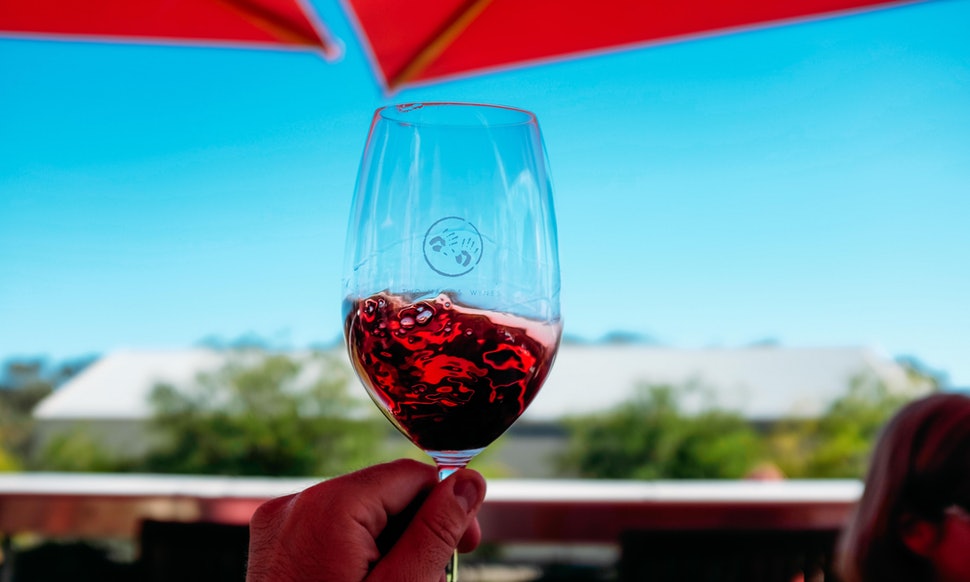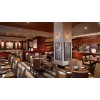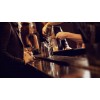How to taste red wine better?
Red wine is a type of wine made from dark-colored (black) grape varieties. The actual color of the wine can range from intense violet, typical of young wines, through to brick red for mature wines and brown for older red wines. The juice from most purple grapes is greenish-white, the red color coming from anthocyanin pigments (also called anthocyanins) present in the skin of the grape; exceptions are the relatively uncommon teinturier varieties, which produce a red-colored juice. Much of the red-wine production process, therefore, involves the extraction of color and flavor components from the grape skin.
Tasting steps
1. Wine temperature: the best drinking temperature of red wine is between 18 and 21 degrees. If you drink red wine in summer, you need to chill it first. Take it out one hour before drinking. It's not suitable for drinking red wine in winter when it's too cold. The taste will be very astringent.
2. Awakening: After the red wine is opened, let it stand for 30 minutes. First, let it contact with the air to increase the aroma of the wine and remove the odor. The two is to let the wood chips from the inverted wine drop to the bottom.
3. Wine holding: Hold the leg and foot under the wine cup with your finger. Do not touch the belly of the wine cup, so as to avoid the influence of hand temperature on the temperature of the wine. But if the temperature of the wine is lower in winter, you can hold the belly with your hand to increase the temperature.
4. Pour wine: The correct way to pour wine is to make the label face up, hold the wine with one hand, control the bottom of the bottle with one hand, and pad a towel on the hand of the bottle, so as not to affect the temperature of the wine. Do not shake the bottle when pouring wine, so as not to pour the sawdust at the bottom of the bottle into the wine cup.
5. Wine viewing: Red wine color will gradually fade over time when young is purple-red, and then slowly turn to dark red. The glass can be placed in front of the white background, slightly tilted outward, about 45 degrees is appropriate, in order to clearly observe the color of the wine.
6. Shake wine: Shake the glass before drinking red wine, let oxygen into the wine to produce aroma, and release esters, ethers, and acetaldehyde in the wine.
7. Smell wine: Smell wine twice. After shaking the wine, cover the nostrils with a cup mask, and then breathe deeply. Good wine tastes thick, but bad wine tastes weak. After smelling it, shake it again, and then smell it.
Some tips
1. Don't add ice to wine.
Wines are usually kept at room temperature. If you want to cool down the wine, you should not add some ice cubes to the wine to achieve a cool and refreshing effect. Because the addition of ice will dilute the taste and aroma of wine, not conducive to the taste and quality of the wine, more likely to cause stomach cold and spleen deficiency body discomfort, thereby affecting health. If you want to drink a cool wine, you can pour ice into the bucket, and then put the whole bottle of wine into the bucket to cool down. For white wine, it is best to drink chilled to 8-12 degrees Celsius, while for red wine, it is best to drink chilled to 14-18 degrees Celsius.
2. Wine plus Sprite
In order to avoid the sour and astringent taste of wine, many people will imitate whiskey tasting by adding a little sprite with high sugar content bubble drinks to neutralize their own sour and astringent. However, wine is different from whiskey. The former has a high sugar content. Drinking method of mixed Sprite will make the sugar content in wine too high. It not only affects the original pure taste and mellow fragrance of wine but also seriously damages the nutrients in wine, thus failing to achieve the effect of health care. In view of this, there are many kinds of wines with different tastes. If you are not used to the sour and astringent taste of dry wines, it is recommended to drink sweet wines, which not only keeps the nutrition in the wine but also adapts well to your taste.
3. Do not Cheer!
Cheers culture is deeply rooted in the Oriental drinking culture. However, the culture of toasting is not suitable for wine tasting. Excessive drinking of wine is not only harmful to health but also harmful to physical and mental health. The optimum drinking volume of wine is related to physical activity. When physical activity is less, the most suitable amount of drinking is 1-2 cups per day; when physical activity is strong, the most suitable amount of drinking is 0.4-0.5 liters per day and drinking a lot of water after drinking. In short, remember that wine is good, but any good thing is too bad.
4. Red Wine with seafood
What food cooperates what wine. Old red wine with high tannin content tends to age seafood when eating with seafood, resulting in loss of flavor in seafood and loss of freshness. For some people with poor gastrointestinal function, red wine with seafood may also cause gastrointestinal discomfort or even diarrhea and other diseases. When enjoying delicious seafood, if you want to pair with a complimentary wine, it is better to choose a lighter white wine.
So there is an old saying in China: Enough is enough, Overdone is worse than undone.
Related Articles
Search
Categories
Popular Posts





















Comments: 0
No comments